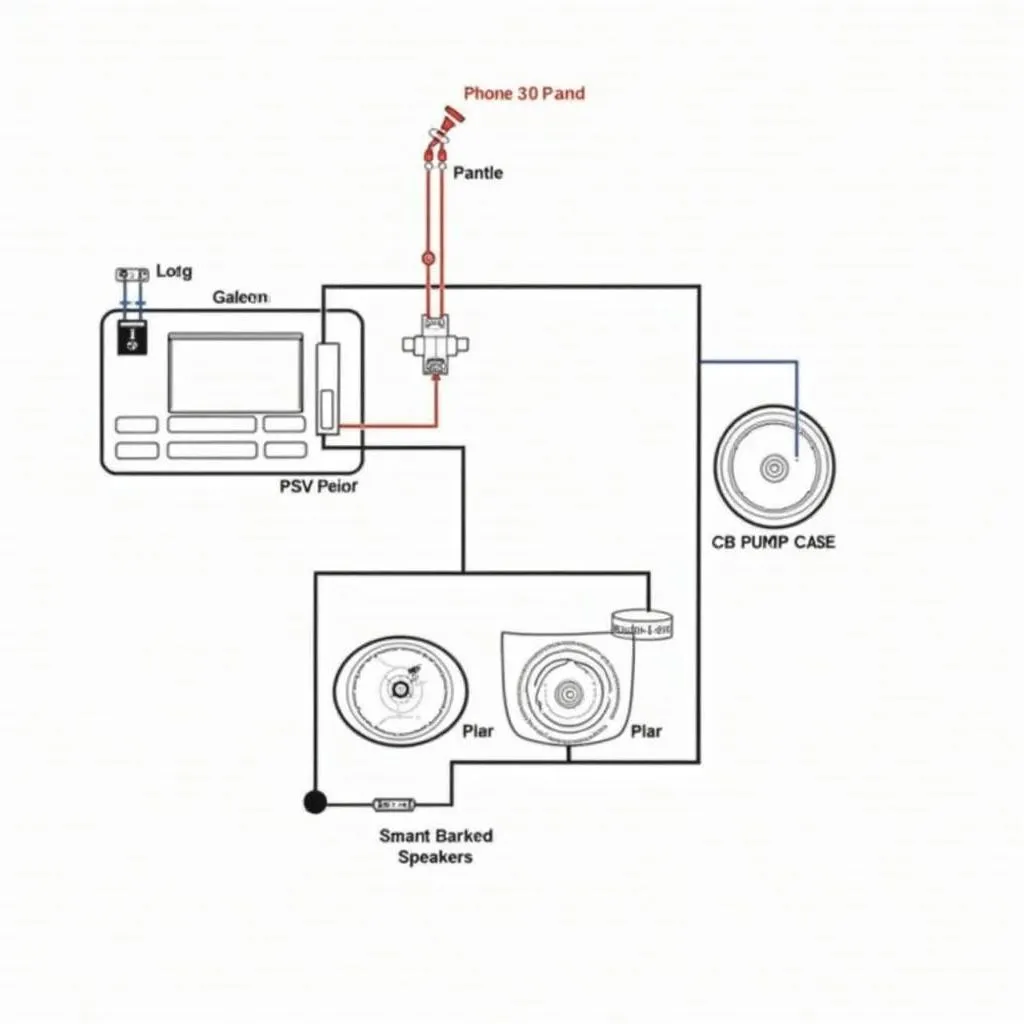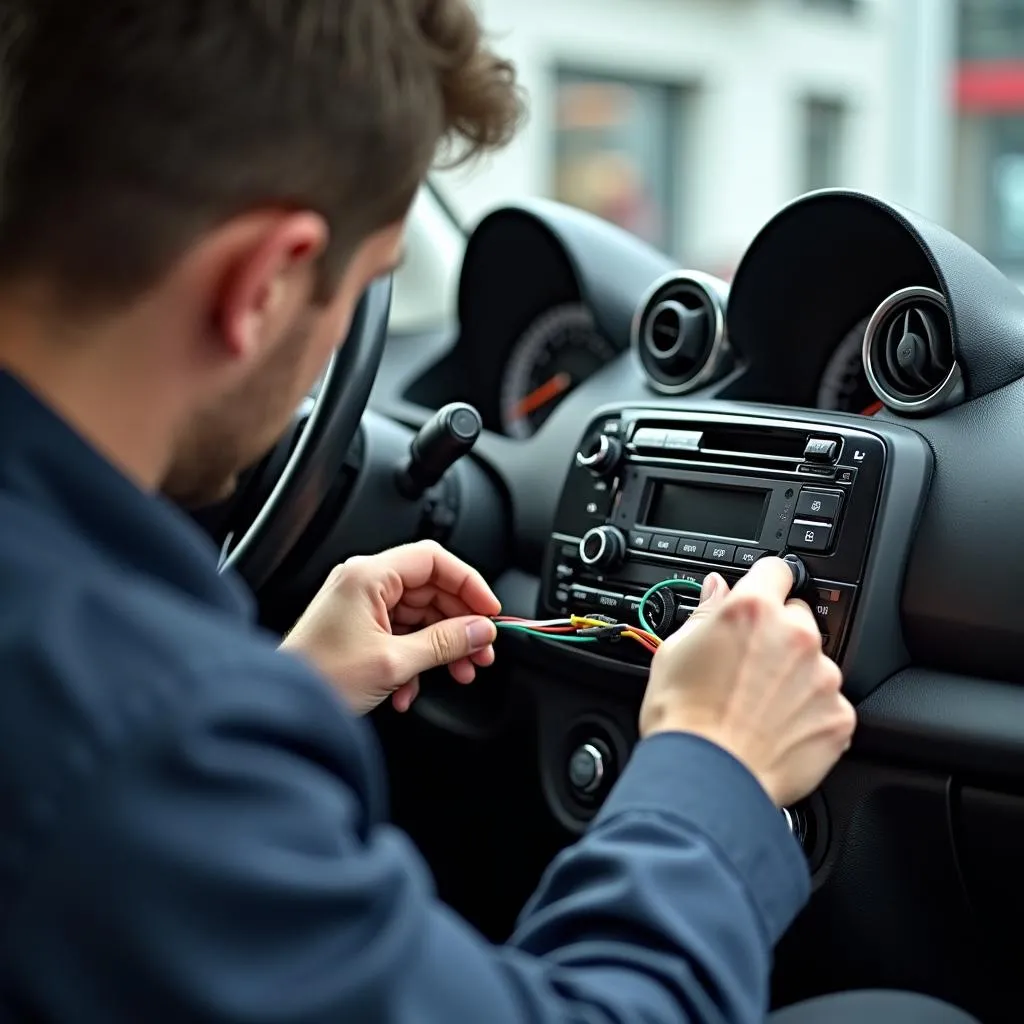Owning a smart car often means embracing the latest technology, and the Highline radio is a prime example. But what happens when your tunes hit a snag due to wiring issues? This guide will equip you with the knowledge to diagnose and potentially solve those problems, getting you back to enjoying your drive in no time.
Understanding Your Smart Car’s Highline Radio System
The Highline radio is more than just a music player; it’s the central hub for entertainment, communication, and sometimes even navigation in your smart car. It connects to various components, including speakers, amplifiers, Bluetooth modules, and even steering wheel controls, through a network of wires hidden behind your dashboard.
Common Smart Car Highline Radio Wiring Issues
Like any electrical system, the wiring in your smart car’s radio system can encounter issues, leading to frustrating problems such as:
- No sound from speakers: This common issue can stem from loose connections, damaged wires, or faulty speakers themselves.
- Intermittent sound: This can be particularly annoying and often points to a loose connection or a partially damaged wire that makes and breaks contact.
- Static or distorted audio: This typically indicates a grounding issue, poor quality wiring, or interference from other electrical components.
- Radio turning off randomly: This could signify a short circuit, a failing radio unit, or a problem with the car’s power supply to the radio.
- Steering wheel controls not working: If your steering wheel controls for the radio stop functioning, it could be due to a break in the wiring harness.
Causes of Wiring Problems
Several factors can lead to wiring issues in your smart car’s Highline radio system:
- Wear and tear: Over time, vibrations and heat cycles can cause wires to become brittle and connections to loosen.
- Improper installation: If the radio was replaced or repaired previously, incorrect wiring during installation can lead to numerous issues.
- Moisture damage: Water leaks in the dashboard area can corrode wires and damage connectors.
- Rodent damage: Rodents are notorious for chewing on wires, especially in cars parked for extended periods.
Diagnosing Highline Radio Wiring Issues
Identifying the root cause of a radio problem often involves a systematic approach:
- Visual inspection: Begin by visually examining the wiring harness behind the radio for any obvious signs of damage, such as cuts, burns, or loose connections.
- Testing continuity: A multimeter can be used to test the continuity of the wires and check for breaks or shorts.
- Ground testing: Ensure all ground connections are secure and free of corrosion.
- Software diagnostics: In some cases, a professional-grade automotive diagnostic tool like those offered by Cardiagtech can pinpoint software-related issues that might be affecting the radio.
 Smart Car Wiring Diagram
Smart Car Wiring Diagram
Tools for Repairing Smart Car Radio Wiring
Having the right tools is crucial for effectively tackling radio wiring repairs:
- Torx screwdriver set: Smart cars often use Torx screws for interior panels and radio installation.
- Panel removal tools: These plastic tools help prevent damage to your dashboard when prying off panels.
- Wire strippers and crimpers: Essential for cutting, stripping, and crimping new wire connections.
- Electrical tape and heat shrink tubing: Used for insulating and protecting wire connections.
- Multimeter: Invaluable for testing continuity, voltage, and resistance in electrical circuits.
Repairing Smart Car Highline Radio Wiring
Depending on your comfort level with car electronics, you can choose to tackle the repair yourself or seek professional help.
DIY Repair:
- Disconnect the battery: Always disconnect the negative battery terminal before working on any electrical system in your car.
- Access the radio: Carefully remove the necessary trim panels to access the back of the radio unit.
- Inspect the wiring: Look for loose connections, damaged wires, or signs of corrosion.
- Repair or replace damaged components: Re-secure loose connections, replace damaged wires, or clean corroded terminals.
- Test the system: Reconnect the battery and test the radio’s functionality.
Professional Repair:
If you’re not comfortable working with car electronics, it’s best to leave the repair to a qualified automotive electrician. They have the expertise and tools to diagnose and fix the problem efficiently.
 Car Audio Technician Repairing Wiring
Car Audio Technician Repairing Wiring
FAQs About Smart Car Highline Radio Wiring
Q: Can I upgrade my Highline radio with a newer model?
A: Yes, but it’s crucial to ensure compatibility with your car’s model year and trim level. Consulting a car audio specialist or researching online forums dedicated to your specific model can provide valuable insights.
Q: My radio works intermittently, but only in cold weather. What could be the problem?
A: Temperature fluctuations can cause materials to expand and contract. This could be a sign of a loose connection that becomes more pronounced in colder temperatures.
Q: My speakers are crackling. Is it a wiring issue or a speaker problem?
A: Crackling speakers could indicate either a wiring problem or a failing speaker cone. A professional can help diagnose the root cause.
Conclusion
Dealing with smart car Highline radio wiring issues can be frustrating, but understanding the common problems, causes, and diagnostic steps empowers you to address them effectively. Whether you choose a DIY approach or seek professional assistance, a properly functioning radio system greatly enhances the pleasure of driving your smart car. Don’t hesitate to contact CARDIAGTECH for expert advice and support on all your car diagnostic needs.
